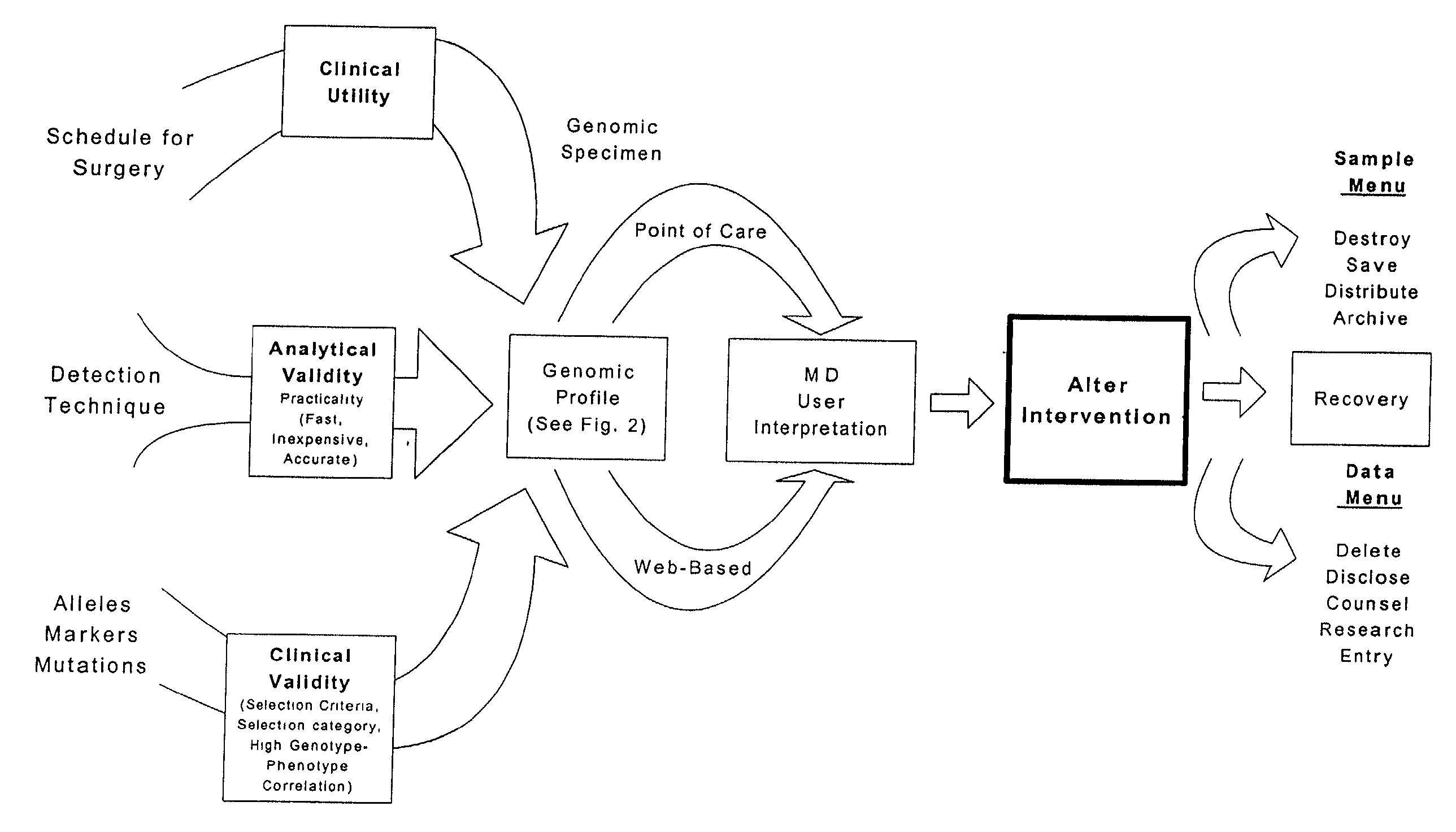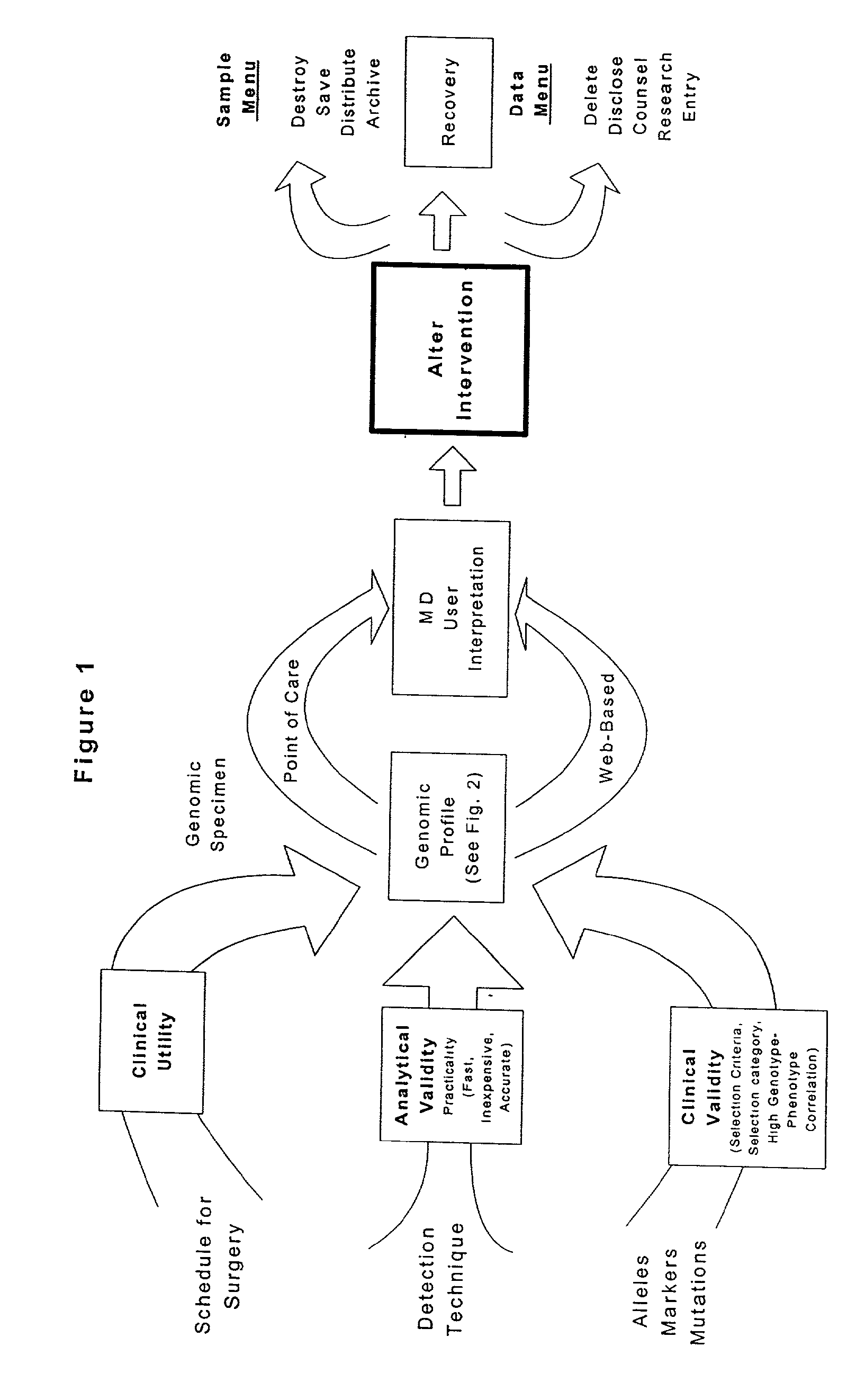Methods and compositions for perioperative genomic profiling
a genomic profiling and perioperative technology, applied in the direction of biological testing, material testing goods, biochemistry apparatus and processes, etc., can solve the problems of inaccuracy and lack of specificity, future harm to patients, and cost of screening tests
- Summary
- Abstract
- Description
- Claims
- Application Information
AI Technical Summary
Benefits of technology
Problems solved by technology
Method used
Image
Examples
example 1
Perioperative Genomic Screening for Anesthesia Markers
[0198]This Example illustrates the generation of a profile for perioperative genomic screening for a patient's response to anesthesia and related medications. Consenting adults, presenting for outpatient surgery, are screened for the variables presented in Tables 1-4. Table 1 lists markers for butyrylcholinesterase deficiency (mutations in the butyrylcholinesterase gene (BChE)). Table 2 lists markers indicative of poor debrisoquine metabolism. Table 3 lists markers indicative of increased risk for thrombus formation. Mutations are in the methylene tetrahyrofolate reductase gene (MTHFR), the methionine synthase gene (MS), the cystathionine β-synthase gene (CBS), the factor 5 Leiden gene (F 5 Leiden), and the prothrombin gene. Table 4 lists markers indicative of increased risk for malignant hyperthermia.
[0199]Patients provide a 10 ml blood sample. Leucocyte DNA is extracted from the buffy coat of citrate anticoagulated blood using ...
example 2
Generation of Genomic Profiles
[0205]This Example describes the development of a genomic profile using two independent genotyping methods. The INVADER assay (Third Wave Technologies) genotyping system was compared with conventional PCR-based RFLP and sequencing methods for a panel of alleles, each with specific and well-established clinical utility. FIG. 4 described the allele panel utilized in the present analysis, along with illustrative complications and indicated interventions.
[0206]Genomic DNA samples (blood, cheek swab) were obtained from up to 176 patients having outpatient, peripheral vascular, neurosurgical or solid organ transplant procedures. The samples were assayed for 15 variant alleles in the BChE, P450CYP2D6, F 5 Leiden, Prothrombin FIT, MTHFR, MTR, MTRR, CBS, TNFα and TNFβ genes (FIG. 4). RFLP analysis was performed according to the manufacturers instructions. The INVADER assay was performed in either the monoplex or biplex format as indicated in FIG. 5. In the monop...
PUM
| Property | Measurement | Unit |
|---|---|---|
| temperature | aaaaa | aaaaa |
| concentration | aaaaa | aaaaa |
| pH | aaaaa | aaaaa |
Abstract
Description
Claims
Application Information
 Login to View More
Login to View More - R&D
- Intellectual Property
- Life Sciences
- Materials
- Tech Scout
- Unparalleled Data Quality
- Higher Quality Content
- 60% Fewer Hallucinations
Browse by: Latest US Patents, China's latest patents, Technical Efficacy Thesaurus, Application Domain, Technology Topic, Popular Technical Reports.
© 2025 PatSnap. All rights reserved.Legal|Privacy policy|Modern Slavery Act Transparency Statement|Sitemap|About US| Contact US: help@patsnap.com



